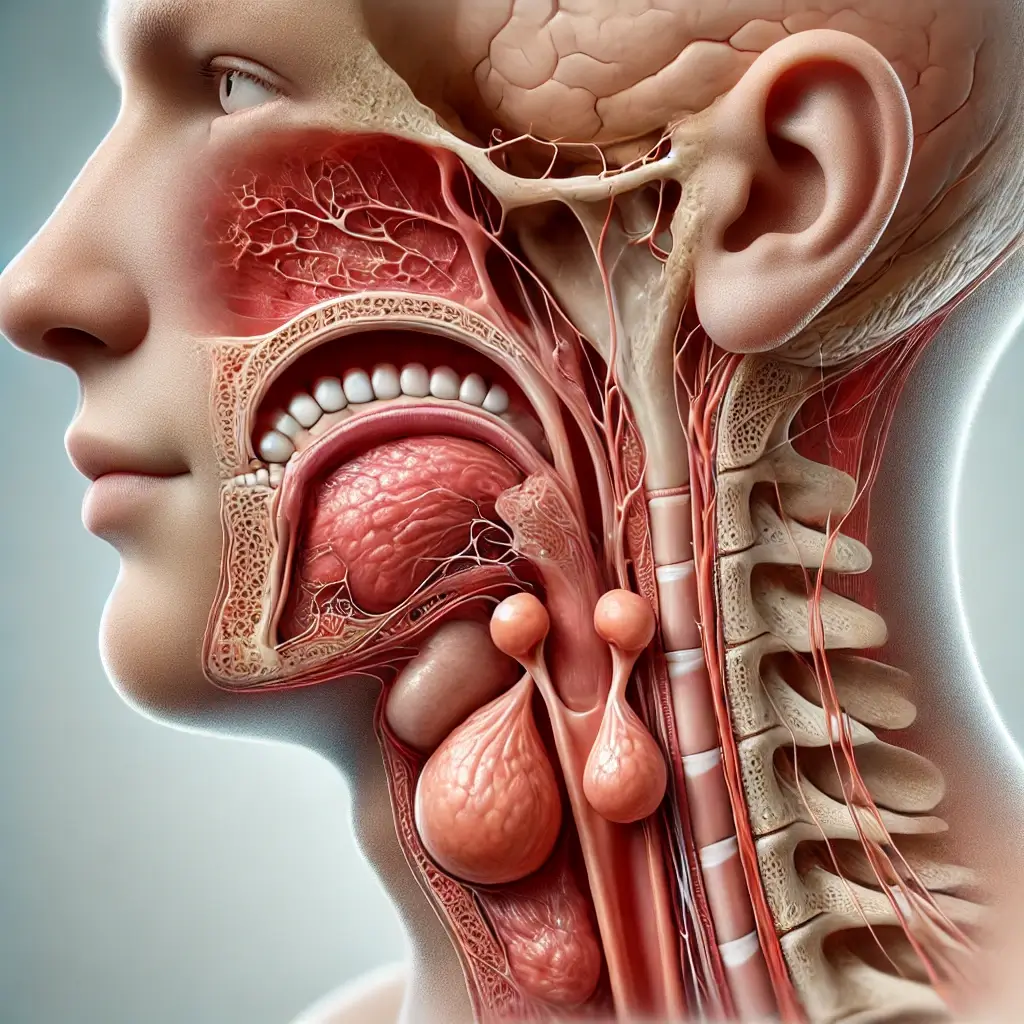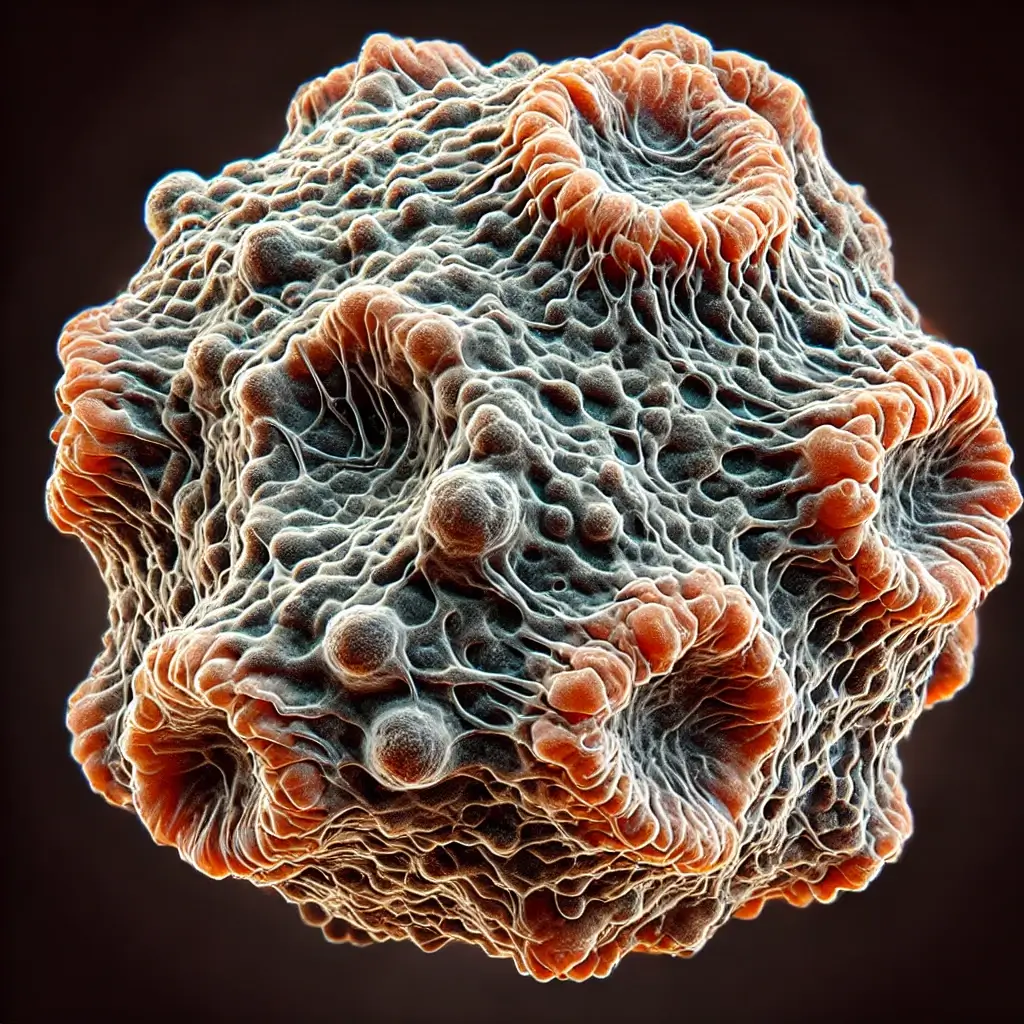Book Appointment Now
Understanding Salivary Gland Cancer

Salivary Gland Cancer Guide
Introduction
Introduction
Salivary gland cancer is a rare type of cancer that originates in the salivary glands, which produce saliva to aid in digestion and maintain oral health. These glands are located in various areas of the head and neck, including the parotid, submandibular and sublingual glands. While salivary gland cancers are uncommon, accounting for less than 5% of head and neck cancers, early detection and treatment are essential for better outcomes. Recent advancements in diagnostic imaging and therapies have significantly improved care.
Statistics
Salivary gland cancer is diagnosed in approximately 1 to 2 cases per 100,000 people annually in the United States. It is more common in individuals over 50 but can occur at any age. The five-year survival rate varies by stage and tumor type, ranging from 90% for localized cases to 40% for metastatic disease.
Medical Illustrations
Microscopic illustration of a salivary gland cancer cell:

Microscopic illustration of the Epstein-Barr virus (EBV):

Risk Factors and Prevention
a. Known Risk Factors
While the exact cause of salivary gland cancer is not always clear, several risk factors have been identified:
- Radiation Exposure: Previous radiation therapy to the head or neck increases the risk.
- Occupational Hazards: Exposure to certain industrial substances, such as nickel compounds and silica dust, may elevate risk.
- Tobacco and Alcohol Use: Although not as strongly associated as with other head and neck cancers, these factors may contribute.
- Genetic Factors: A family history of salivary gland tumors may increase susceptibility.
- Viral Infections: Certain viral infections, such as Epstein-Barr virus (EBV), have been linked to specific types of salivary gland cancers.
b. Prevention
- Avoid unnecessary radiation exposure.
- Use protective equipment when working with industrial chemicals.
- Maintain a healthy lifestyle, avoiding tobacco and limiting alcohol consumption.
- Regular medical checkups for early detection of abnormalities.
Screening
Symptoms and Early Warning Signs
Symptoms of salivary gland cancer can vary depending on the location and size of the tumor. Common signs include:
- A painless lump or swelling in the cheek, jaw, or neck
- Persistent pain in the face or neck
- Difficulty swallowing or opening the mouth widely
- Numbness or weakness in part of the face
- Unexplained dry mouth or excessive saliva production
- Persistent ear pain
If these symptoms persist for more than two weeks, consult a healthcare provider for evaluation.
Diagnosis
Diagnosing salivary gland cancer involves a combination of physical examinations and diagnostic tests:
- Physical Examination: Includes inspection and palpation of the head, neck and oral cavity.
- Imaging Tests: CT scans, MRIs, or PET scans help visualize tumors and assess their spread.
- Fine Needle Aspiration (FNA) Biopsy: A minimally invasive procedure to collect tissue samples for analysis.
- Core Needle or Excisional Biopsy: May be performed for more extensive tissue sampling.
- Lab Tests: Detect tumor markers or assess overall health before treatment.
Stages
Types of Treatment
Overview of Treatment Modalities
The treatment approach for salivary gland cancer depends on the tumor’s size, location and stage. Options include:
- Surgery:
- Parotidectomy: Removal of part or all of the parotid gland, often the site of tumors.
- Neck Dissection: Removes affected lymph nodes if the cancer has spread.
- Radiation Therapy: Often used post-surgery to target residual cancer cells.
- Chemotherapy: May be used for advanced or metastatic disease, though it is less common as a standalone treatment.
- Targeted Therapy: Focuses on specific cancer growth pathways, such as HER2 inhibitors for certain subtypes.
- Immunotherapy: Emerging treatments for advanced cases.
Comparing Treatments
| Treatment | Mechanism | Side Effects | Efficacy (Survival Rate) | Study/Trial |
|---|---|---|---|---|
| Surgery | Removes tumor | Pain, swelling | 85% 5-year survival for localized cases | Smith et al., 2022 |
| Radiation Therapy | Shrinks or eliminates tumors | Fatigue, skin burns | 70% 5-year survival for early-stage cases | Lee et al., 2021 |
| Chemotherapy | Inhibits cell division | Nausea, fatigue | 40% 5-year survival for advanced cases | Carter et al., 2020 |
| Targeted Therapy | Blocks cancer growth pathways | Diarrhea, fatigue | 60% 5-year survival for HER2-positive cases | Brown et al., 2023 |
| Immunotherapy | Enhances immune response | Rash, flu-like symptoms | 55% 5-year survival for metastatic cases | Green et al., 2023 |
Living with Salivary Gland Cancer
Living with salivary gland cancer involves addressing both physical and emotional challenges.
Recommendations include:
- Speech Therapy: Helps patients recover communication skills after surgery affecting facial nerves.
- Nutritional Support: Consult a dietitian to manage swallowing difficulties or dry mouth.
- Pain Management: Work with a care team to address chronic pain or discomfort.
- Psychological Support: Counseling or support groups can help cope with emotional challenges.
- Regular Follow-Ups: Ongoing monitoring is essential to detect recurrence and manage long-term side effects.
Additional Resources
Key Takeaways
- Salivary gland cancer is rare, but requires prompt diagnosis and treatment.
- Symptoms like painless lumps, facial numbness, or difficulty swallowing warrant medical attention.
- Treatment options include surgery, radiation and emerging therapies like immunotherapy.
- Comprehensive care, including rehabilitation and psychological support, is vital for improving quality of life.
Final Recommendations
- Pay attention to unusual lumps or persistent symptoms and seek early medical evaluation.
- Reduce risk factors by maintaining a healthy lifestyle and avoiding harmful exposures.
- Discuss all treatment options with a multidisciplinary care team to ensure personalized care.
- Engage in supportive therapies to enhance recovery and quality of life.
Disclaimer
The information provided in this article is intended for general informational purposes only and should not be construed as medical advice. While every effort has been made to ensure the accuracy of the information presented, it is not a substitute for professional medical guidance, diagnosis, or treatment. Always consult a qualified healthcare provider with any questions you may have regarding a medical condition, including Salivary Gland Cancer. Do not disregard or delay seeking professional medical advice based on information found in this article. The authors and publishers are not responsible for any consequences resulting from the use of the information provided.
